Welcome to another story of a street in Bradford on Avon. This small Wiltshire town is full of interesting streets and buildings, many with stories to tell. Today, I am in Church Street and revealing something about the history of this lovely place. Many of the buildings are centuries old, with a mix of residential, commercial and former industrial.
At one time, several banks were situated along the road, the last one to close, being Lloyds Bank in 2017. Let’s start my tour of Church Street on the north side, that’s the right-hand side when entering from Market Street. I will then make my way back along the south side to finish my story at a very old building, The White Swan Hotel.
Old Town Hall
This grand old building is L-shaped and occupies both Church Street and Market Street. The Old Town Hall was built in 1855 by a private company and leased to the council. I thought that was a modern idea. How wrong could I be! It has also been used as a magistrates court and police station. Today the central part of the building is a Roman Catholic Church, St Thomas Moore opened in 1955. The Roman Catholic Church purchased the central part of the building and the wind which extends into Chruch Street. The Midland Bank occupied the Church Street wing, and closed in 2013, then under the name of HSBC, today it is the Bradford on Avon Hub.
The wing to the right of the church doorway is used as retail units and these are in Market Street. The old police station sign is still visible, but more about that when I cover Market Street in the future.
The Old North Wilts Bank
Our next building is another old bank. It was purpose-built for the North Wilts Bank around 1860. The builders, the Jones family had a quarry in Bradford on Avon, along what is now called Jones’ Hill. It looks good in the local stone built in the classical Italianate style of architecture.
The bank became part of Capital Counties Bank which itself became part of Lloyds Bank. This was the last bank to close in Bradford on Avon in 2017, leaving only the Coventry Building Society as a financial concern in the town.
Church House
There is another banking story to this property but before that, we go back to around the year 1730 when it was built. It was the Palladian Mansion home of Christopher Brewer, a lawyer. There has always been money to be made in the legal profession. Probably, relatively more so in the 18th century.
It was next occupied by another lawyer, Daniel Clutterbuck who died in 1769. We know that from 1821 it was a branch of another bank which was based in Bath, Hobhouse, Phillot and Lowder. The bank failed in 1842 having lent heavily to many businesses in Bradford on Avon and beyond. It was a disastrous time for many who had their savings and business accounts with the bank.
The ground floor of the house was let out to the North Wilts Bank until their new building, next door, was opened around 1860. A plaque on the garden wall says it was leased to the bank until 1861. Today Church House is a private home.
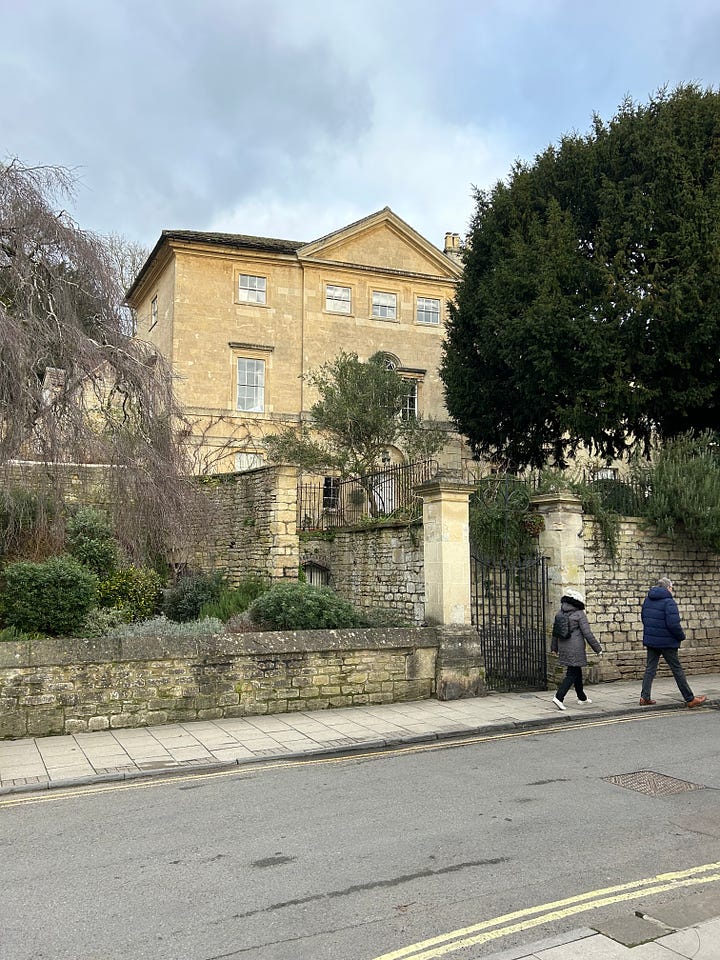

Holy Trinity Church Hall
This is a fascinating building and one of the oldest properties in the town. It was funded by Thomas Horton, a local clothier. He died in 1530. The building has been through some changes over the years. During the 17th century, it was converted into several houses with additional gables. During the 1920s it was restored. Before that, between 1874-1903, it was a grammar school. The Freemasons have used it since then and in 2010 bought the entire building.
Druce’s Hill House and houses next door.
Druce’s Hill House is a mansion which in 1738 was described as newly built. It was owned by the wealthy clothier, Anthony Druce. Two years later he was not so wealthy having been declared bankrupt. In the early 1840s a surgeon, James Pearce, lived here, leasing it from General Henry Shrapnel. It has recently been refurbished, a project under the guidance of Bath Conservation Architects. (Construction started in December 2019 - completed end of 2020.)


Dutch Barton and Little Dutch Barton
We now come to Dutch Barton and Little Dutch Barton, an L-shaped building. The part on Druce’s Hill was given a new Georgian façade in the 18th century. Looking carefully I can see the join on the corner. Both parts of this charming property are medical businesses.

Abbey House and Horton House
Abbey House is another Palladian mansion found in Bradford on Avon. The original owner, George Bethell, had it built in circa 1775. Bethell owned a quarry in Frome Road, Bradford on Avon and was also a clothier. It’s had many private owners over the years, but from 1911 to 1973 it served as the offices of Bradford on Avon & Melksham Rural District Council. It then became the technical centre of St Ivel, a dairy company, which had a strong presence in Wiltshire. They ceased to use it in 1995.
Horton House is somewhat hidden behind Abbey House, you can just see it on the right, behind it in the second photo. This is a historic grade 2 listed house in private ownership. It’s one of the few surviving early Tudor buildings in Bradford on Avon. The main part of the house was built in 1496, however, its history dates back a few more centuries. It has been lived in by many of the town’s wealthy clothiers. It’s a magnificent example internally and externally of a property of this age, with wonderful secluded gardens, which often have been opened to the public.

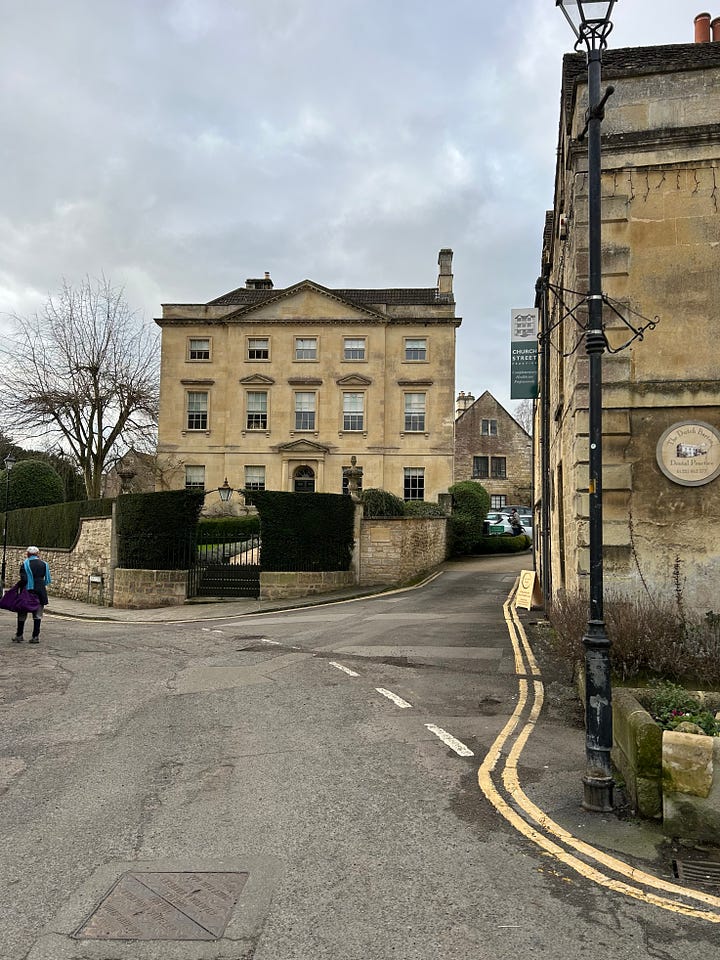
Saxon Church of St. Laurence
I have written a small piece about this amazing old church before, and I will add the link below. It was likely built for King Æthelred, or Shaftesbury Abbey and takes us back to the likely year, 1001 AD. It’s believed it ceased being used as a church in the 12th century when the parish church across the road was built. Interestingly, it became an ossuary - a what? you exclaim! An ossuary is a place where the bones of the dead are kept, often called a skull house.
No bones are on show now, in fact, it later became a cloth factory and between 1712 to 1874 was a grammar school. There are soot marks on a wall inside where the kitchens have been cooking the meals for the pupils. See if you can spot the soot marks in one of the photos below. It was in the 1850s when Canon Jones realised that this was a Saxon building and should be restored. Looking at the outside photos of the church you can see where more buildings have been attached in the past and removed to restore it as it was originally designed.
Today, visitors can wander around and take in the history. There are occasional church services held here.

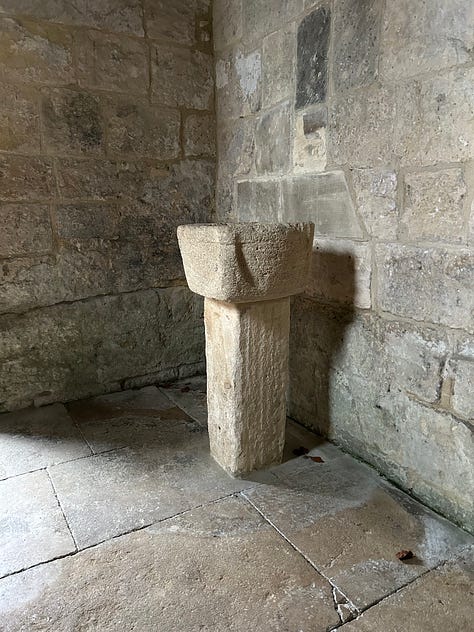
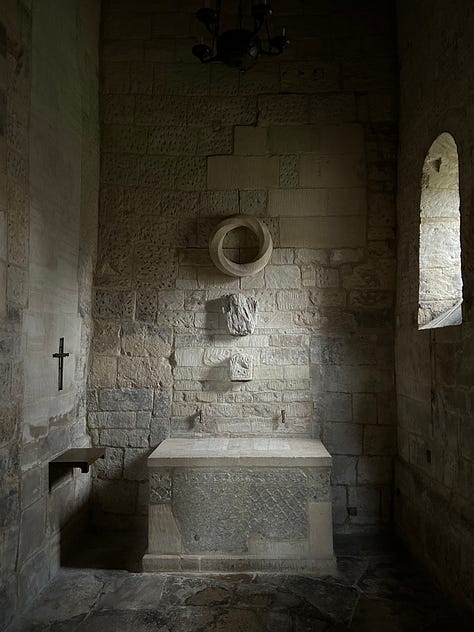



Church Street Cottages
Next, along this side of the road, we find this lovely old row of cottages. They were built on land belonging to the church. When were they built? One of them gives a great clue. Number 10 has a date stone showing it was built in 1697 and contains the initials of residents, William and Sybil Dicke. Records show that by 1704 there were three houses.
I found a newspaper clipping revealing the cottages were almost lost in 1961. They were condemned and would have been demolished under a slum clearance scheme! Five cottages were put up for sale at £550 by the Church authorities who owned them.
Thankfully, these and some other houses elsewhere in the town were saved. The sale price of £550 plus renovation costs, seems nothing today in comparison to the value, both in financial and historical terms.
Following World War Two, the condition of the working class housing in Bradford on Avon achieved national notoriety. It was truly appalling. One Government enquiry described Bradford's slums as being 'as bad as the worst inner city slums in the north of England'. - A far cry from today’s restored buildings.

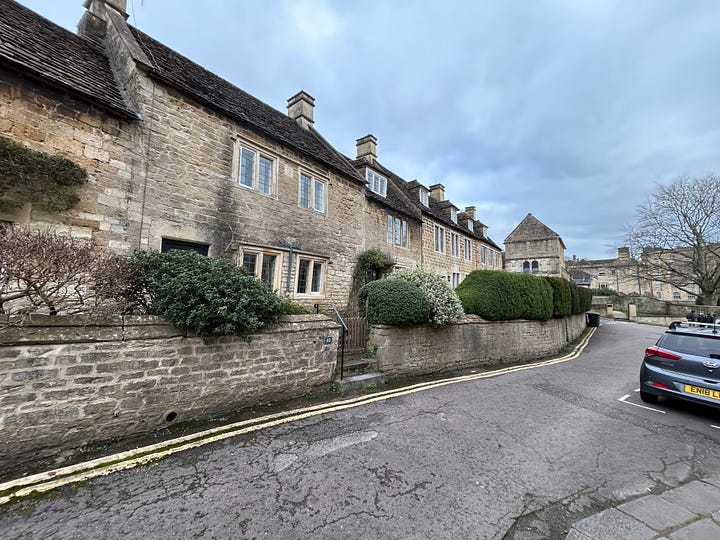
Orpin’s House
Moving past the cottages, and we are getting closer to the end of Church Street. Our penultimate property on the north side is Orpin’s House. Here is yet another home with several hundred years of history. It’s a fine twin-gabled house with three bays. This one dates back to either the late 17th century or early 18th century. The Tuscan Doric doorcase might have been added later.
The name Orpin House is taken from a former owner, Edward Orpin. He is thought to be the subject of Thomas Gainsborough’s painting, The Parish Clerk. Edward was also the Coroner of the Market and appeared to have several duties in Bradford on Avon. His death was recorded in 1781.


The National School
And now we reach our final north side building. This was the National School, established by the Anglican Church and opened in 1836. Each floor contained a classroom. On the ground floor, we would have seen the boys receiving their education and upstairs the girls. It remained a school until 1896 and closed when a new school, Trinity School, was built on land behind. The two houses we see contained here today were converted in the 1980s.
I now cross to the south side of Church Street and take a look at the buildings. Not so many on this side, but never the less interesting and old.
Kingston Place
My walk now brings me to a more modern building - if we can call 1840 modern. In terms of the age of properties in this area - we can. This is the former vicarage and replaced a house already on the site. It was called The Vicarage but was sold off in the 1980s and renamed Kingston Place. All we can see from Church Street is the roof viewed from the churchyard and the entrance to the private drive on the street. Therefore, I cross the river to get to a point where I can see the house. A few days before taking this photo I would have been over waist height in floodwater!
Holy Trinity Parish Church
Here we have another long-lived building in Bradford on Avon, Holy Trinity Parish Church. Our time travel takes us back to the 12th century. Amazingly several tall round-headed windows are still here, a true tale of survival. The base of the tower is from this period, but the tower and spire are later. The chancel is a 13th-century extension and has a large east window. In 1864 northern aisle was added and the church had some restoration.



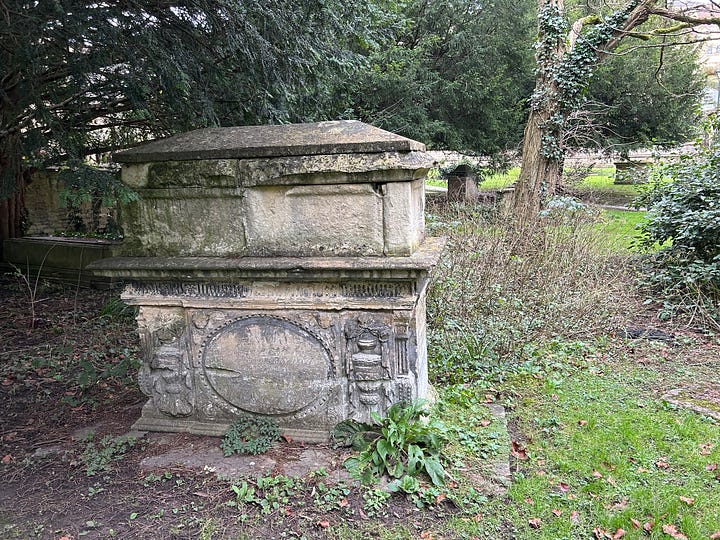
Abbey Mill
I love industrial heritage. Britain was once full of such buildings as Abbey Mill. It’s good to see many remain and used. This one was converted to retirement apartments in 1997, and very nice they are too.
Abbey Mill was the last of the great wool cloth factories to be constructed in Wiltshire. The building we see today was constructed in 1875 and replaced an older building. In 1902 the factory ceased to produce cloth and became the Spencer Moulton Rubber Works. An industry that grew in the surrounding area until recent times. Avon Rubber took over in 1956 and used it for offices and a canteen. Their large factory was a short walk away. There is a whole story about the rubber industry to tell in the future.

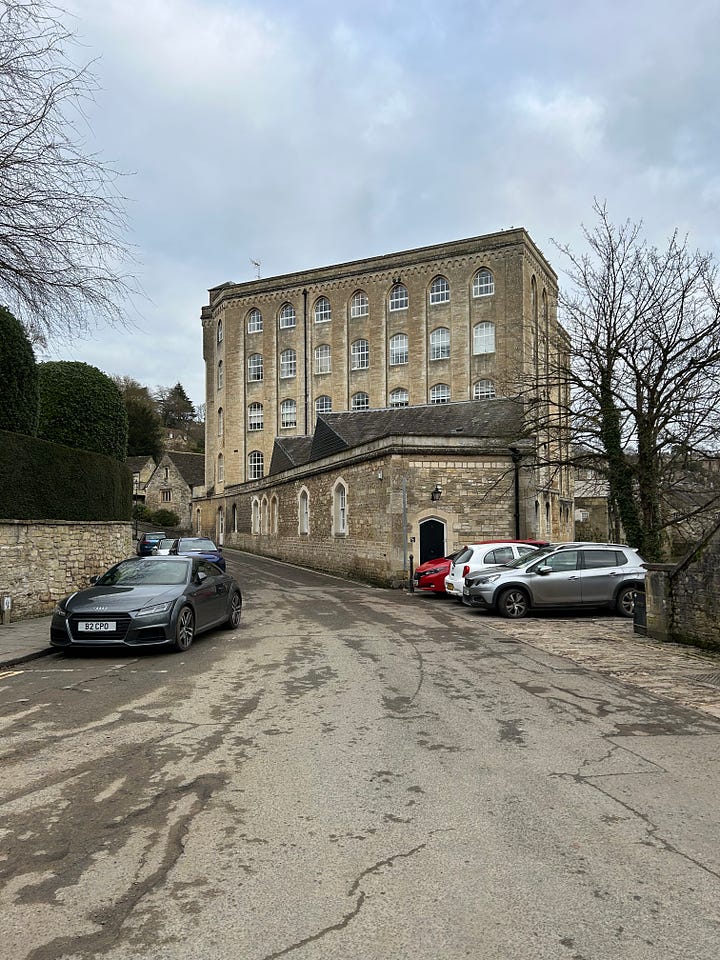
Church Street Mill
Lying at the far end of the Abbey Mill residents’ car park we can get a good view of Church Street Mill. This was again built for the woollen cloth industry. The first part of the building works was in 1798 for a company called, Jones & Tugwell. It became part of Abbey Mill’s operations from around 1833. Originally, it was a factory building of four storeys running along Church Street, another building running at right angles to the street (I believe this is what we are looking at now), and more buildings running along the river.
The buildings that have disappeared were demolished in 1915 and also in the 1960s when demolishing the old seemed to be a national sport. I have already mentioned that some things were saved from the bulldozer, but Church Street Mill did lose many.
Hang Dog Alley
This little alley leads between the shops down to the river and the road called The Bullpit, and apparently, is the only street in Britain to have this name. No one knows why it is called Hang Dog Alley. Right up until the 1960s it was lined with 17th-century gabled houses. I can’t imagine anyone these days getting approval to demolish such houses. Today, it was closed due to recent flooding. The Bullpit and Church Street around Abbey Mill have been underwater.
Old Bank House
We find yet another former bank, aptly named Bank House. This was a branch of the Wilts & Dorset Bank from the 1880s and was taken over by Lloyds Bank in 1914. It did have a life before becoming a bank. If we go back to 1752, we find that it was described as “formerly the Red Lyon“. That gives us an idea that this building belies its age. It was sold to another clothier, John Moggridge in 1794 and to the rear of the house he built a cloth factory. It is now a private house.
Moving on into the next century, approximately 1820 - 1885, it became a printer and stationer, owned by the Rawlings family. I said that the building belies its age. The facade is Georgian (a common practice) and it hides the fact that this was once a pair of gabled houses, built much earlier. The top windows which you can see in the photo are all false except one, which was once a gable. The disguise is well done but does not extend to the rear of the property.
The Swan Hotel
Here we have another building with a Georgian appearance, The Swan Hotel, which has also been called The Swan Inn. The date 1500, displayed in the centre frame, would have been added during the Georgian period. The internal part of the hotel has the look that it is a much older building than the Georgian1 one.
It has been a hotel for centuries and only last year did it put the shutters up, due to the present economic climate. It is at the moment ‘mothballed’ with the hope that it can be reopened. It has been used as a town hall, and many events have been held over the years. It would be a great shame if it can’t remain a hotel.
I hope you have enjoyed this look at Church Street, Bradford on Avon. You can see that it has a rich history as do many more streets in this lovely Wiltshire market town. Look out for more articles in the future. Please become a subscriber!
Georgian Period - 1714 to 1837















